Frank Thomas Phone Number, Fanmail Address, Autograph Request and Contact Details
If you want to know about Frank Thomas’s real phone number and also look for Frank Thomas’s email and fanmail address then, you are at the correct place! We are going to give you the contact information of Frank Thomas like his phone number, email address, and Fanmail address details.
Frank Thomas Contact Details:
REAL NAME: Frank Thomas
NICKNAME: Frank Thomas
DOB: 27 May 1968 (age 54 years)
BIRTHPLACE: Columbus, Georgia, United States
NATIONALITY: American
BIRTH SIGN: Gemini
PROFESSION: Baseball first baseman
FATHER: Not Known
MOTHER: Not Known
SIBLINGS: NA
SPOUSE /WIFE: Elise Silver (m. 1992–2001), Megan Thomas
CHILDREN: Frank Thomas III, Sterling Edward Thomas, Sloan Alexandra Thomas, Sydney Blake Thomas
INSTAGRAM: https://www.instagram.com/bighurt/
TWITTER: https://mobile.twitter.com/thebighurt_35
FACEBOOK: https://www.facebook.com/Frank-Thomas
YOUTUBE CHANNEL: https://www.youtube.com/c/Thomasfrank/
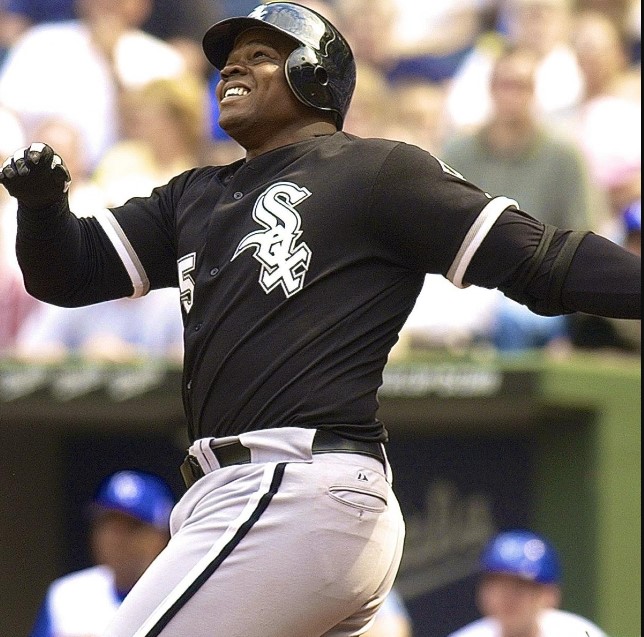
Frank Thomas Bio
Frank Thomas was without a doubt one of the most entertaining players to break into the big leagues throughout the decade of the 1990s. Thomas, who is six feet five inches tall and weighs 257 pounds, is a good fit for the moniker “The Big Hurt.” This phrase perfectly captures the destructive nature of his skills as a power hitter for the Chicago White Sox. Thomas was recognised as the Most Valuable Player of the American League for the two consecutive years (1993 and 1994) that he had exceptional seasons in which he led the league in a variety of offensive and defensive categories and was awarded the award.
For his part, the hardworking Thomas has only this to say: “I want to make a dent in the game.” Indeed, by the year 2005, Thomas had made a “dent,” becoming his team’s all-time leader in home runs (436) and runs batted in (1,439). The play of Thomas has garnered comparisons to the careers of some of baseball’s most famous players. Between 1991 until 1997,
Thomas made history by being the only player in the game’s annals to achieve the feat of batting over.300 for seven consecutive seasons while also hitting 20 or more home runs, driving in 100 runs, scoring 100 runs, and walking 100 times. There have been just four other players who have come close to matching his record. Lou Gehrig, Ted Williams, and Jason Giambi are the only players who have done this accomplishment for as many as four seasons in a row, and all of them are in the Baseball Hall of Fame. It should come as no surprise when Thomas won the Most Valuable Player title for the first time in 1993 when it was decided by a unanimous vote from the Baseball Writers’ Association of America.
Jerome Holtzman, who writes for the Chicago Tribune, Thomas is “among the very best hitters in baseball history, and probably the best of his generation,” which is “flooded with strong-arm sluggers hitting for both distance and average.” Thomas takes baseball very seriously because it is a serious business. Even though he consistently achieves at very high levels, he pushes himself to even greater levels of achievement by establishing even more stringent goals for himself and working extremely hard to achieve them. “I’m a competitive person,”
he elaborated in an article published in the Chicago Tribune. “I’ve been involved in athletics my whole life, and I don’t handle failure well. That’s why I try to outwork everyone else,” Frank Edward Thomas Jr. said in another Chicago Tribune profile. “I’ve learned this much. A player can’t take anything for granted. I have a gift. But that means I have to work extra hard to get better.” Frank Edward Thomas Jr. was the fifth of six children born to Frank and Charlie Mae Thomas.

He was given the nickname “Big Baby” and was pushed to utilize his natural talent for sports when he was growing up in Columbus, Georgia. His parents never coerced him into participating in sports, but they knew that if he wasn’t at home, he was probably out someplace in the neighborhood playing ball. Even though his working-class family could scarcely fathom his living such a life, he never made a secret of the fact that he wanted to be a professional baseball player once he got older. Thomas shared his story with the Chicago Tribune, saying, “When I was a youngster, perhaps around the age of 12, I already knew I wanted to be a player.” “So I was simply telling [my parents] what it was that I wanted, and I pursued my goal, and I worked hard enough to obtain it. A lot of people in today’s day and age won’t devote themselves like that… I was a little bit different.”
Thomas was only nine years old when he managed to persuade both his father and the local coaches that he was old enough to play football in the Pop Warner league, which was reserved for children aged 12 and older. As predicted, he had little trouble making it into one of the teams and quickly secured the position as starting tight end. When he played baseball in Little League, he was just as successful, and that’s when he first encountered the many deliberate walks that still get him on base to this day. The loss of a loved one helped him put his athletic accomplishments into perspective.
Pamela, who was just two years old when she passed away in 1977, had leukemia. It’s something you don’t look back on. The way I’ve dealt with it is to completely forget about it. As the years went by, it got easier and easier. However, Thomas has not really forgotten his baby sister. He told the Chicago Tribune: “It was sad. It affected me. But it’s something you don’t look back on.” Over the course of many years, he has maintained a strong relationship with The Leukemia Foundation, contributing to the organization’s efforts to generate funds for research for a cure for the illness.
Thomas was awarded a scholarship to attend The Brookstone School, a prestigious private high school and college preparation programme located in his hometown. He decided to leave after just three years and transfer to the public school in the area to take advantage of the more challenging athletic programmes there. There, he wasted no time in establishing his impact on the scene. When he was a sophomore at Columbus High School, he was the cleanup hitter for a baseball team that ended up winning the state title. As a senior, he led the baseball team with a.440 batting average, was honoured as an All-State tight end for the football team, and was a forward for the basketball team.
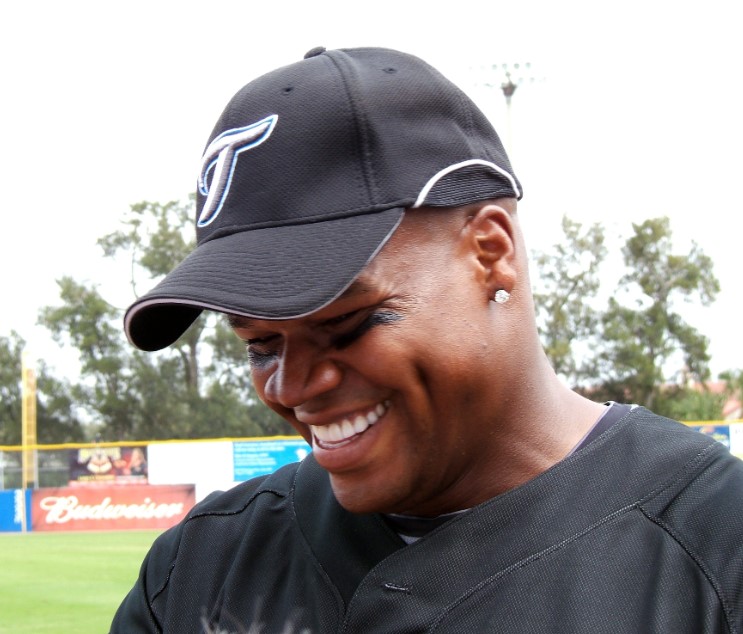
The amateur draught that took place in 1986 passed him by entirely, despite the fact that he had a strong desire to get a contract to play baseball at the professional level. There were around 891 players that were signed by baseball organisations during that time, yet Thomas was not one of them. In an interview with the Chicago Tribune, Thomas said, “I was startled and heartbroken.” People have misunderstood me for some reason. I was always one of the most competitive kids around. I saw a lot of guys I played against get drafted, and I knew they couldn’t do what I could do. But I’ve had people my whole life saying you can’t do this, you can’t do that, and it scars you. No matter how well I’ve done. I played against a lot of guys, and I knew they couldn’t do what I could do.
Thomas decided to attend Auburn University in the fall of 1986 after being offered a scholarship to play football there. Despite this, his passion for the game led him to try out for the baseball club at Auburn, where the coach quickly noticed the talent he had. According to Auburn baseball coach Hal Baird, who spoke to Sports Illustrated, “We liked him.” “He never failed to crack a smile, and his eyes were constantly sparkling with enthusiasm.”
As a rookie, he led the Tigers in runs batted in and led the team to a batting average of.359 while also leading the team in the number of runs batted in. He was a member of the United States national team during the summer of 1987. Pan American Team, so securing a place on the final squad that would go on to take part in the Pan American Games. The Games and the beginning of football preparation at Auburn coincided, so he left the Pan American squad and went to college, only to be hurt twice in early season football games. Because the Games and the beginning of football practice at Auburn coincided. Because Thomas could no longer play football, he risked losing the scholarship he had been awarded for that academic year.
Instead, the school has continued to pay for his expenses, and baseball has become his only sport. As a sophomore, he already had a level of play that earned him consideration for the United States team. National Team, which was getting ready to compete in the 1988 Summer Olympics, however he was not selected for the final roster. He was hurt and angry after being misunderstood once again, so he fought back. He finished his junior year of baseball with a batting average of.403, a slugging percentage of.801, 19 home runs, and 19 doubles, and his batting average was 19 for 19. In anticipation of yet another amateur draught, the scouts gradually came to the realization that the tall native of Georgia could, in fact, play baseball.
After the Atlanta Braves, who played in his native state of Georgia, had selected another player in the first round of the draught in June 1989, the Chicago White Sox selected Thomas seventh overall. Thomas was overjoyed to be playing for Chicago and not Georgia, despite the fact that he had hoped to be playing for the Bulldogs. It was with the Sarasota, Florida Class-A White Sox that he made his debut in the minor leagues. As a member of the Class AA Birmingham Barons, he hit.323 with 18 home runs, 71 runs batted in, and a league-best 112 walks in the next year, 1990, which earned him the title of Minor League Player of the Year from the publication Baseball America. In addition, he led the league in walks.
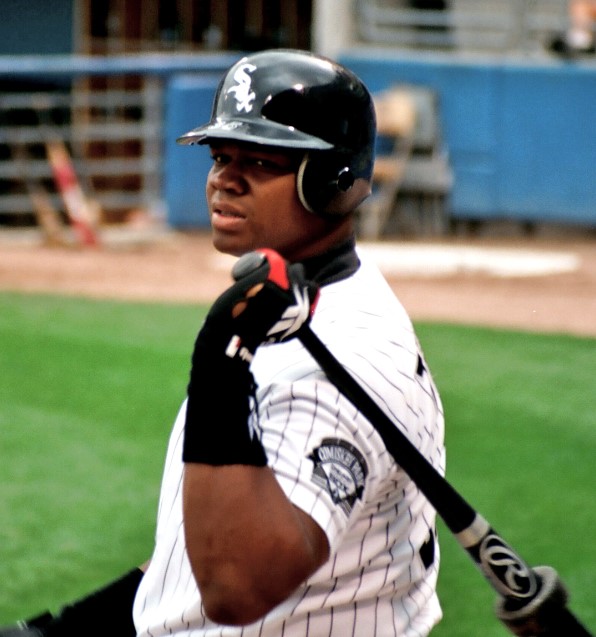
Born Frank Edward Thomas Jr. on May 27, 1968 in Columbus, Georgia; son of Frank Thomas (a bail bondsman) and Charlie Mae Thomas (a textile worker); married Elise Silver in 1992 (they have since divorced); children: Sterling (a boy), Sloan (a daughter), and Sydney (son). Education: From 1986 till 1989, he studied at Auburn University. Baseball player who spent the years 1989–2000 in the major leagues with the Chicago White Sox organisation. 1989: Played for the Class A Sarasota White Sox; 1990: Joined the Birmingham Barons; 1990: Made his debut with the Chicago White Sox; 1991: Became the full-time first baseman for the White Sox. Big Hurt Enterprises was a sports marketing organisation that was founded by the author between the years of 1994 and 1999. Un-D-NY able Entertainment was a recording company that was founded by the author in the 1990s.
Awards: Most Valuable Player of the Southeastern Conference and selection to the All-SEC Tournament team in baseball in 1989; selected Most Valuable Player of the American League in 1993 and 1994. Participant in the All-Star Game for the American League in both 1994 and 1995. On August 2, 1990, the White Sox organisation summoned Thomas up to the big leagues, and this was the day that they were finally ready to concede that they may have been sitting on a potential star all along. Over the course of the next two months, Thomas hit.330 with seven home runs and 31 runs batted in, propelling his team into a close contest for the pennant.
After that, he was never seen playing in another inning for any of the minor league teams. By the time the spring of 1991 rolled around, he had established himself as Chicago’s regular first baseman. Thomas had a batting average of.318 along with 32 home runs and 109 runs batted in with the White Sox in his first full season with the team. He walked 138 batters, which was the most in the big leagues, and his on-base percentage was the most (.453). He came in third place in the vote for the Most Valuable Player of the American League, behind seasoned veterans Cal Ripken Jr. and Cecil Fielder, at an age when most young players are still trying to make a name for themselves. Thomas immediately earned the nickname “The Big Hurt” among the fans of the Chicago Cubs because to his towering stature and his propensity to inflict significant pain on opposing pitchers.
The New York Times published an article the offseason of the 1992 big league baseball season that discussed the relative value of current major league players. The article claimed that Thomas was “the greatest bargain in the majors” based on his salary of $120,000 in 1991, which was calculated using a formula that took into account various different data. The White Sox wasted no time in trying to appease their rising star by offering Thomas a new three-year deal with a basic salary that is more than one million dollars. This amount does not include any potential performance incentives.
In response, Thomas dominated the American League in 1992, finishing first in extra-base hits, on-base percentage, walks (tying for the league lead with 122), and doubles. Thomas guaranteed that he could perform even more admirably if he were shielded from the challenges that come with superstardom. According to what he described in the Chicago Tribune, “Concentration is the key.” I make an effort not to get sidetracked. Lately, I’ve been ignoring a lot of people because they’re in the way of my work. I don’t want to do that, but in order to be effective, I need time to myself.
In 1993, Thomas and the White Sox both had outstanding years in terms of performance. It was a unanimous decision to give Thomas the Most Valuable Player honour. In the tough American League West, the White Sox were able to win their division and claim the championship. Despite the fact that the White Sox were eliminated from the playoffs of the American League by the Toronto Blue Jays, Thomas emerged as the central figure on his team. He was rewarded appropriately with a lucrative product endorsement agreement with Reebok, Pepsi-Cola, DonRuss, and Bausch & Lomb in addition to a four-year contract believed to be worth $42 million. The contract was awarded to him as a result of his outstanding performance.
Thomas’ newfound financial stability, which he obtained as a result of the purchase, did nothing to dampen his desire to win. In an interview with the New York Times, he said, “I can’t afford…not turning up to the ball field psychologically.” “I have to be on every night to be a force in the lineup. I’m a modest man; I’ve always been humble. But I recognize my position.” White Sox fans may always bemoan what might have been. “I have to be on every night to be a force in the lineup.” The 1994 baseball season was cut short due to a strike, just as Frank Thomas was on the verge of writing his name into the annals of baseball history.
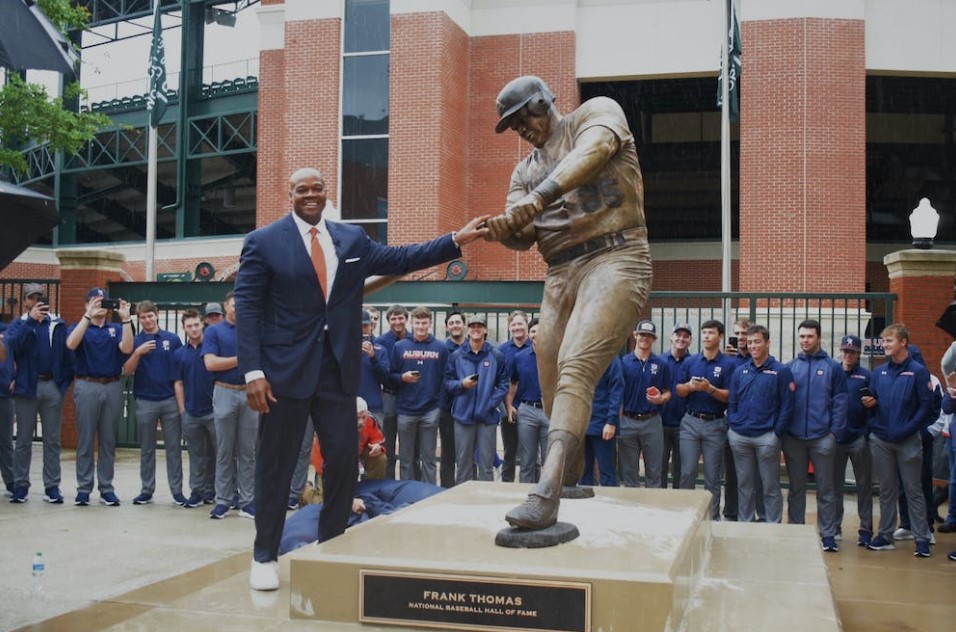 Thomas, more than anyone else, felt the pain of the strike because he was on the verge of achieving one of the most important prizes in baseball: the Triple Crown. Since 1967, no player has ended the regular season atop the leaderboards for batting average, home runs, and runs batted in all three categories. Thomas was in the running for the accolade when the strike happened, and his stats were excellent enough to win him a second Most Valuable Player award for the American League.
Thomas, more than anyone else, felt the pain of the strike because he was on the verge of achieving one of the most important prizes in baseball: the Triple Crown. Since 1967, no player has ended the regular season atop the leaderboards for batting average, home runs, and runs batted in all three categories. Thomas was in the running for the accolade when the strike happened, and his stats were excellent enough to win him a second Most Valuable Player award for the American League.
Thomas, when pressed by the media to comment on his accomplishments as well as his future, told the Atlanta Journal and Constitution, “I’m not into being known as the best by fans or the media. I care how I’m perceived by my peers. I can settle for the label ‘one of the best’ because that means you’re considered an elite player.” This “elite player” has made it clear that baseball comes first and that off-the-field activities rank a distant second. Thomas has spent a lot of time and effort over the years attempting to steer clear of the type of life that takes place in a fish bowl for fellow Windy City icon Michael Jordan.
This devotion to his sport as a serious business has resulted in some misconceptions for Thomas in Chicago, but as the White Sox have continued to perform well, he has garnered respect for his workmanlike mentality. Because Thomas is such a dangerous batter, he walks (both intentionally and unintentionally) with an astonishingly consistent rate. Because of the enormous amount of home run power he has, some onlookers have even hypothesized that he will one day be intentionally walked with the bases loaded. According to Baseball Digest, by the time the 2003 season had come to a conclusion, Thomas had “surpassed 2,000 hits” and had also “entered the 400-home run club.”
In 1993, Thomas said that he had absolutely no intention of ever leaving Chicago. The slugger once told Sports Illustrated, “I envision myself with the Sox my entire career,” and even though he was getting close to the conclusion of his career in 2005, he stayed with the team. Before he retired, he wanted to accomplish two things: first, he wanted to win the World Series; second, he wanted to become the first player in baseball history to reach the plateau of 500 home runs and 3,000 hits, which was previously held by baseball greats Hank Aaron, Willie Mays, and Eddie Murray. And despite the fact that he accomplished more in his first few years playing in the big leagues than many players do in their whole careers, he remains humble.
He never stopped working for more lofty objectives. In an interview with the Chicago Tribune, he said, “I embrace the chance to get to the top.” I want to be the guy there with two out and the bases loaded trying to get a hit. I love that situation. When asked what final mark he would like to leave on the game, Thomas paused and concluded: “I want to be able to…when I leave here, I want people to say, ‘Hey, I don’t know if some of the things he did can ever be done again.'” If injuries don’t derail his plans, Thomas intends to retire from baseball after Regardless of whether or not he accomplishes it, it seems that he will end up in the Baseball Hall of Fame.
| Frank Thomas | |
|---|---|
| Phone Number | NA |
| House address (residence address) | Columbus, Georgia, United States |
| Official Website | NA |
| Snapchat Id | NA |
| Whatsapp No. | NA |
| https://www.instagram.com/bighurt/ | |
| https://www.facebook.com/Frank-Thomas | |
| Spotify | NA |
| https://mobile.twitter.com/thebighurt_35 | |
| TicTok Id | NA |
| Email Address | NA |
| Office address | NA |
| Office Number | NA |
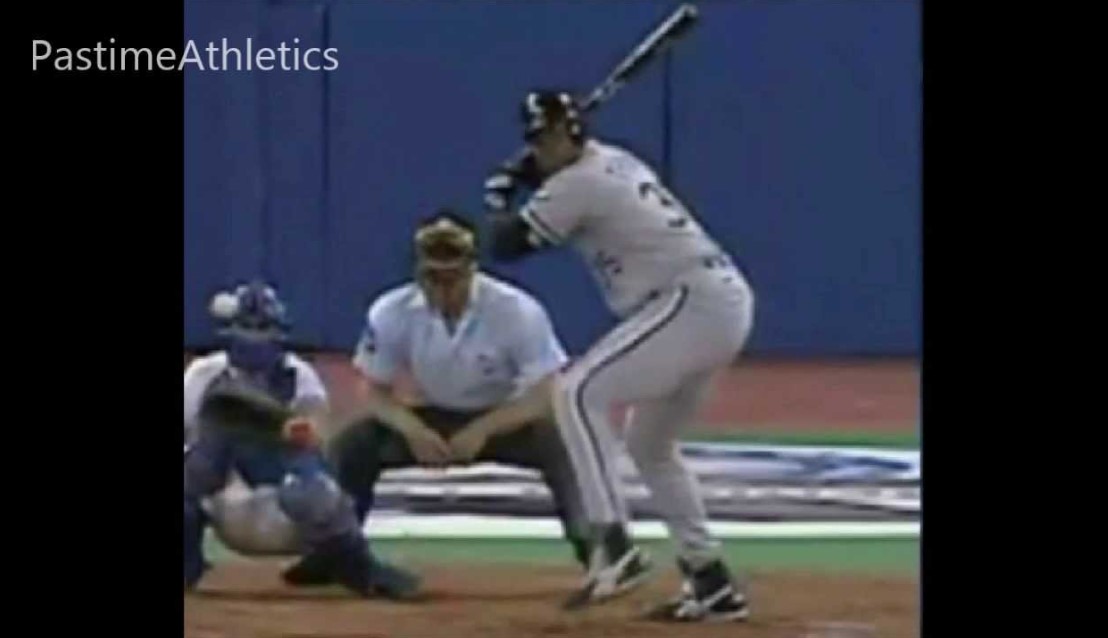
Best Methods to Contact Frank Thomas:
It is simpler to contact Frank Thomas with the below-written contact ways. We have composed the authenticated and verified communications methods data as given below:
1. Frank Thomas TikTok: NA
Frank Thomas has TikTok Account on his own title name. He is posting his videos regularly. Follow Frank Thomas on TikTok and also get the latest updates and video recordings from his account.
2. Frank Thomas Instagram: https://www.instagram.com/bighurt/
Instagram is the most used social media platform. You will get a bio of each and a very famous personality over Instagram. Even you can make contact with them through direct messages using it. Likewise, you can utilize Instagram to see Frank Thomas’s Insta profile and his latest pictures.
3. Frank Thomas Facebook: https://www.facebook.com/Frank-Thomas
Facebook is also the most famous social media platform. You can get the bio of each and every famous personality on Facebook. You can also contact them through direct messages. Likewise, you can use Facebook to see Frank Thomas’s Facebook profile and his new pictures.
4. Frank Thomas Twitter: https://mobile.twitter.com/thebighurt_35
It is simpler to find and contact famous personalities by using the popular social media app Twitter. You can tweet using her Twitter id so that he could view your tweet and reply back to you with relevant answers.
5. Frank Thomas Phone Number, House Address, Email
Here we discuss the most common contact methods like the phone number of Frank Thomas, his email address, and his fanmail address.
Phone number: NA
Email id: NA
Frank Thomas Fanmail address:
Frank Thomas
1515 Sunnyview Rd
Libertyville, IL 60048-5328
USA
Read Also: Frank Gore Phone Number, Fanmail Address, Autograph Request and Contact Details